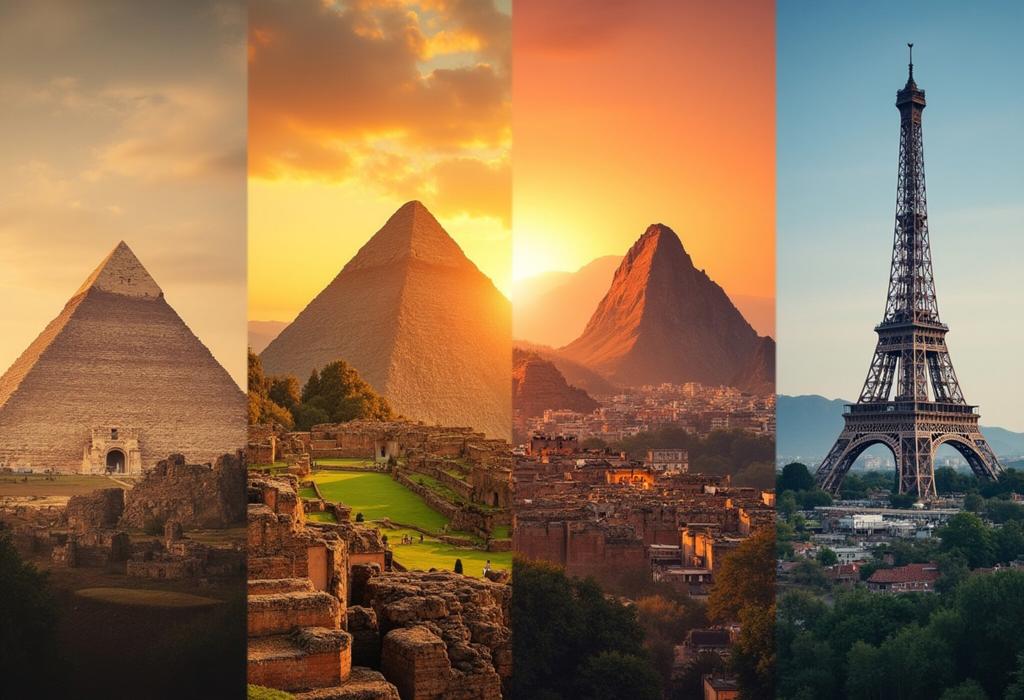For more details on this content, please review the step-by-step guide and frequently asked questions.
The Spiritual Geography of Ancient Cultures

Step-by-Step Guide
Understanding Spiritual Geography
Spiritual geography involves studying how ancient cultures perceived the world around them in relation to their spiritual beliefs. Begin by defining the term and exploring its significance in ancient societies. Examine how landscapes, celestial bodies, and elements of nature were often seen as reflections of the divine.
The Role of Nature in Spiritual Practices
Investigate how natural features like mountains, rivers, and trees were revered and often featured in rituals. Discuss different cultures, such as the Native Americans' connection to nature and how the Egyptians worshipped the Nile River. Look into how these elements were viewed as sacred spaces for communion with the spiritual realm.
Sacred Sites and Pilgrimages
Explore key sacred sites across various ancient cultures, such as Stonehenge in England, Machu Picchu in Peru, and the Pyramids of Giza in Egypt. Examine their geographical settings, construction, and the journey that pilgrims undertook to reach them, along with the significance these sites held in their respective spiritual practices.
The Concept of Axis Mundi
Delve into the concept of Axis Mundi, a point of connection between Heaven and Earth found in many ancient cultures. Discuss examples such as Mount Meru in Hinduism and the Cosmic Tree in Norse mythology. Explain how these ideas shaped their understanding of the universe and guided their spiritual practices.
Celestial Geography and Astrology
Analyze the relationship between celestial bodies and spiritual beliefs in ancient cultures. Cover how civilizations like the Babylonians, Egyptians, and Maya built their calendars based on the stars and planets. Discuss how these beliefs dictated agricultural practices, religious festivals, and societal structures.
The Cultural Impact of Spiritual Geography
Examine how spiritual geography influences culture, from art and literature to daily life. Discuss how the beliefs surrounding sacred landscapes and celestial formations have inspired folklore, mythology, and storytelling across various cultures.
Relationship with Ancestors and Ancestral Land
Explore how ancient cultures viewed their connection to the land and ancestors. Discuss practices such as ancestor worship and land-based spirituality seen in cultures like Indigenous Australians and the Celts. Emphasize how land is considered sacred and integral to identity.
Modern Interpretations of Ancient Spiritual Geography
Reflect on how the ideas of spiritual geography have continued in modern contexts. Discuss Neo-pagan movements, contemporary spiritual practices, and the resurgence of interest in ancient wisdom. Encourage readers to contemplate their relationship with nature and spirituality in today's society.
Creating Your Own Spiritual Map
Guide the reader in creating a personal spiritual map that represents their connection to the places and elements that are meaningful to them. Provide prompts and suggestions on how to visualize their own spiritual geography, drawing inspirations from ancient practices.
Conclusion: Embracing Our Spiritual Landscape
Summarize the key points about the spiritual significance of geography in ancient cultures. Encourage readers to recognize the spiritual aspects of their surroundings, appreciate the insights offered by ancient wisdom, and integrate these ideas into their modern lives.








